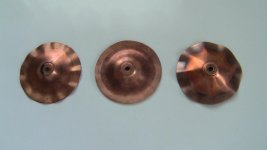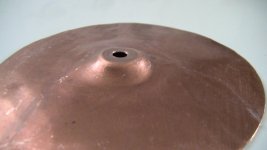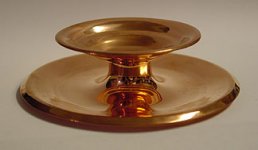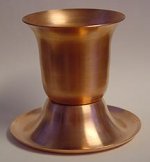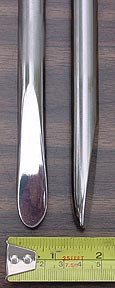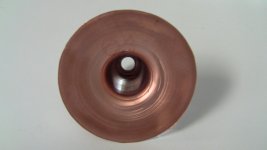Thanks sbmathias for the video link. I had watched others on YouTube, but not that one. They make it look easy or no big deal, but I haven't gotten it figured out yet.
I also appreciate the feedback from elfrench and moonlight machine. I've tried a few things initially and will share them below.
My initial setup was with a wooden mandrel, but after finding it difficult to secure the copper sheet like shown in many videos due to it slipping, I made an aluminum mandrel and put a threaded hole in the center to aid in securing the sheet to it so it didn't slip while spinning. I know spinning doesn't require a hole, but in my case, the cup holders I want to make require a hole, so I just used it to my advantage. The first 2 pics show the aluminum mandrel. During these attempts I used the 2nd highest speed on my lathe - whatever that equals since many videos or online info talked about using high speeds.
The next 3 pics show attempts #4, 5 & 6, which are the first ones to use the aluminum mandrel. It's a little hard to see, but in all cases the center sheared away due to the high friction forces I experienced while spinning. I know the videos showed nice tooling, but I initially tried an old wooden broom handle since I was concerned that any metal tools would leave marks on the copper. Basically as I moved away from center, the torque got too high and caused the shearing. Like elfrench mentioned, I figured some work hardening was also occurring so during attempt #6, I positioned a propane torch on the lathe so the copper was heated continually while spinning. It didn't seem to make much difference.
I'm going to continue this message in the next message since it will only let me upload 5 pics totaling 3 MB and I got 3 more for the last part...



